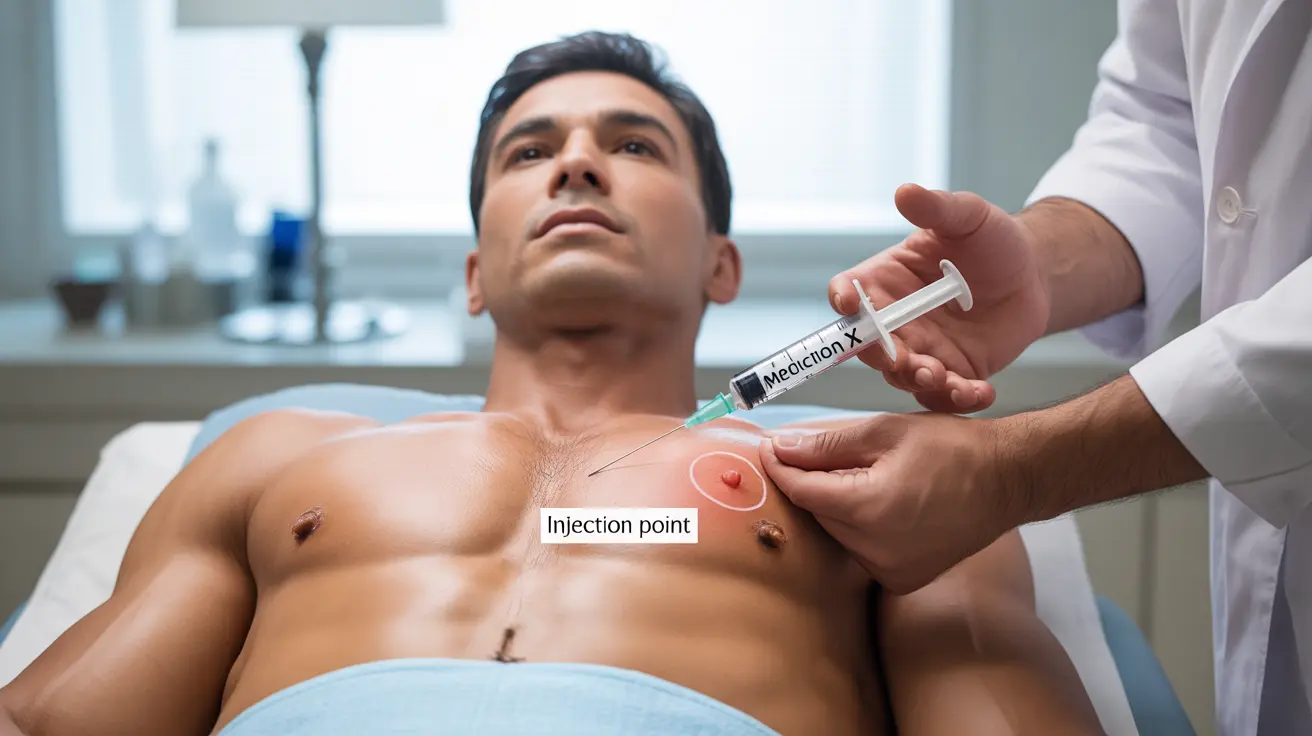For men experiencing erectile dysfunction (ED), penile injections represent an effective treatment option when oral medications haven't provided satisfactory results. This medical treatment involves carefully administered medications directly into the penis to achieve and maintain erections suitable for sexual activity.
While the concept might seem intimidating at first, penile injection therapy has been used successfully for decades and offers a reliable solution for many men with ED. Understanding how these injections work, their proper administration, and potential risks is crucial for anyone considering or beginning this treatment.
How Penile Injection Medications Work
Penile injections utilize vasodilator medications that work by relaxing the smooth muscles in the penis and expanding blood vessels. This process increases blood flow to create and sustain an erection. Common medications used include:
- Alprostadil (Caverject, Edex)
- Papaverine
- Phentolamine
- Trimix (a combination of all three medications)
These medications typically produce results within 5-20 minutes after injection and can maintain effectiveness for 30-60 minutes, depending on the specific medication and dosage used.
Proper Administration Technique
Correct administration of penile injections is crucial for both effectiveness and safety. Healthcare providers will provide detailed training and specific instructions, but general steps include:
- Proper hand washing and sterilization
- Correct medication preparation
- Identifying the appropriate injection site
- Using proper injection technique
- Safe disposal of medical supplies
Your healthcare provider will determine the right starting dose and adjust it based on your response to achieve optimal results while minimizing risks.
Benefits and Effectiveness
Penile injections offer several advantages over oral medications:
- Higher success rates (80-90% effectiveness)
- Predictable timing of erections
- Effectiveness in cases where oral medications fail
- Option for men who can't take oral ED medications
Safety Considerations and Side Effects
While generally safe when properly administered, penile injections can have potential side effects that users should be aware of:
- Minor pain or bruising at injection sites
- Risk of priapism (prolonged erection)
- Potential scarring with long-term use
- Small risk of infection
Following proper technique and dosing guidelines helps minimize these risks significantly.
Frequently Asked Questions
What medications are commonly used in penile injections for erectile dysfunction, and how do they work?
The most common medications include alprostadil, papaverine, and phentolamine, often used individually or in combinations like Trimix. These medications work by relaxing smooth muscles and increasing blood flow to create an erection.
How do I correctly administer a penile injection at home to minimize pain and complications?
Proper administration involves thorough hand washing, careful preparation of the medication, identifying the correct injection site (usually the side of the penis), and using the proper injection technique as demonstrated by your healthcare provider. Always follow specific instructions provided for your prescribed medication.
What are the common side effects and risks associated with penile injection therapy?
Common side effects include mild pain at the injection site, bruising, and the possibility of scarring with long-term use. More serious risks include priapism (prolonged erection) and infection, though these are relatively rare when proper technique is followed.
How effective are penile injections compared to oral ED medications, and who is a good candidate?
Penile injections are typically more effective than oral medications, with success rates of 80-90%. Good candidates include men who haven't responded well to oral medications, those who can't take oral ED drugs due to other medications or health conditions, and those seeking more reliable timing of erections.
What should I do if I experience a prolonged erection (priapism) after a penile injection?
If an erection lasts longer than 4 hours, seek immediate medical attention. This is a medical emergency that requires prompt treatment to prevent permanent damage. While waiting for care, try walking, doing light exercise, or applying ice packs to help reduce the erection.




